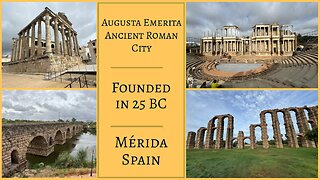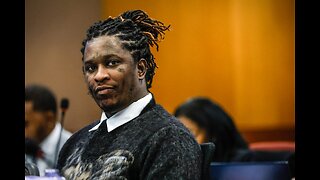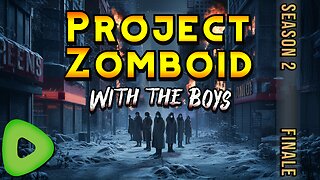Wat Phutthaisawan วัดพุทไธสวรรย์ - Built in 1353 With Drone Footage - Ayutthaya Thailand 2024
Wat Phutthaisawan or the Monastery of Buddhist Kingship is located on the south bank of the Chao Phraya River.
The temple was built in 1353 by King Ramathibodi I at the royal residence of "Wiang Lek", the site where he first settled before establishing Ayutthaya as the capital city in 1350.
The temple was constructed after his elder brother (the ruler of Suphan) defeated the Khmers and brought them back under the control of Ayutthaya in 1352.
The temple was likely built by the large number of enslaved Khmer inhabitants forcibly removed from Angkor to Ayutthaya at that time. The monastery was one of the first temples constructed and had a preaching hall and a great holy reliquary.
The old temple complex was enclosed by an outer wall measuring 192 meters in length and 92 meters in width. The vihara has its entry to the east and measures 48 meters in length and 16 meters in width. The main Khmer-style prang is surrounded by a square cloister.
The prang, representing the cosmic Mount Meru, is located in the middle of the ancient compound and is built on an indented pedestal protruding towards the north and south, resulting in a wing-like formation, which was characteristic for prangs of the early Ayutthaya period.
The statue of King U-Thong
Within the large prang was an image of King Ramathibodi I (King U-Thong). In 1784, in the reign of King Rama I, Prince Thepphonphak went to Ayutthaya to restore the elephant kraal and found the figure. He reported this to the king who decided to move the image to Bangkok. Later the figure was re-casted as a Buddha image, gilded with silver and moved to the Phra Nak Hall.
King Rama IV placed the image at the Prasat Phra Thep Bidorn (the Royal Pantheon - The Shrine of
the celestial Ancestors) in Wat Phra Kaeo in Bangkok. Local people believe that the spirit of Ramathibodi I still resides here.
South of the vihara is another smaller vihara with a reclining Buddha. Within the outer wall there are a number of chedi rai (small chedis) and small monastic structures.
The temple has been frequently restored throughout the Ayutthaya period. New constructions include the chedis in row, some of which were built during the Middle Ayutthaya Period.
Outside the boundary wall
The monastic quarters are situated west of the old site. On site is a two-story building called the Tamnak Phra Phutthakosajarn Hall (the residential building of Somdet Phra Phutthakosajarn), which served as a model for the Jim Thompson's silk shop in Bangkok. It was constructed together with its mural paintings in the Late Ayutthaya
Period.
The base of the building, curved like the hull of a Chinese junk, is classic for this period. The interior of the hall is highlighted with murals depicting the ten Jatakas (reincarnations of the Budddha - The Pali canonical book of Theravada Buddhism comprises 547 poems concerning the previous births of the Buddha) and the Somdet Phra Phutthakosajarn's pilgrimage to the Footprint of Lord Buddha in Ceylon. These murals are very faded but still visible after all of these years.
This temple has so much history and was a lot of fun to explore.
Enjoy the video!
You can also see my videos on Rumble, Bitchute, Odysee and Subscribe Star. If you have any questions or comments and wish to contact me directly I can be reached by email at endlessjourneytravels@gmail.com
https://www.bitchute.com/channel/pYUe8EgYcUMc/
https://odysee.com/$/latest/@EndlessJourney
https://rumble.com/c/EndlessJourney
https://www.subscribestar.com/endless-journey
Follow me on Twitter @AEndlessJourney
#endlessjourney
#travel
#thailand
-
 36:56
36:56
Endless Journey
4 days agoMérida Spain - Ruins of the Roman City of Augusta Emerita - UNESCO World Heritage Site - Spain 2024
22 -
 LIVE
LIVE
Vigilant News Network
12 hours agoTucker Carlson Delivers Powerful Election Prediction | The Daily Dose
1,907 watching -
 LIVE
LIVE
ttvglamourx
8 hours ago $11.79 earned24 HOURS OF CALL OF DUTY BLACK OPS 6 !DISCORD
928 watching -
 10:06:31
10:06:31
Akademiks
17 hours agoBreaking: Young Thug Trial MOST Likely ABOUT 2 END in Mistrial. Happy Bday Drake. Uzi Announces EA2
104K39 -
 LIVE
LIVE
Right Side Broadcasting Network
1 day agoLIVE REPLAY: President Trump Headlines Turning Point Rally in Las Vegas - 10/24/24
4,195 watching -
 4:41:33
4:41:33
JdaDelete
16 hours ago $58.46 earnedProject Zomboid with the Boys | Season 2 Finale | Fiery Farewell
78.3K8 -
 3:46:43
3:46:43
Alex Zedra
11 hours agoLIVE! New Game | The Escape: Together
48.4K9 -
 4:20:25
4:20:25
Drew Hernandez
22 hours agoTRUMP RALLY LAS VEGAS NEVADA
91.6K36 -
 1:38:08
1:38:08
Glenn Greenwald
14 hours agoCNN Town Hall Exposes Kamala's Inability To State Beliefs; Democrats' "Trump Is Hitler" Tactic Failing Again | SYSTEM UPDATE #357
125K176 -
 1:07:17
1:07:17
Donald Trump Jr.
20 hours agoMore Media Hoaxes, They’re as Desperate as Ever. Interviews with Steve Moore, Lee Smith, and Matt Walsh | TRIGGERED Ep.185
185K219